Advertisement
The Giant, Inflatable, Walk-Through Cell
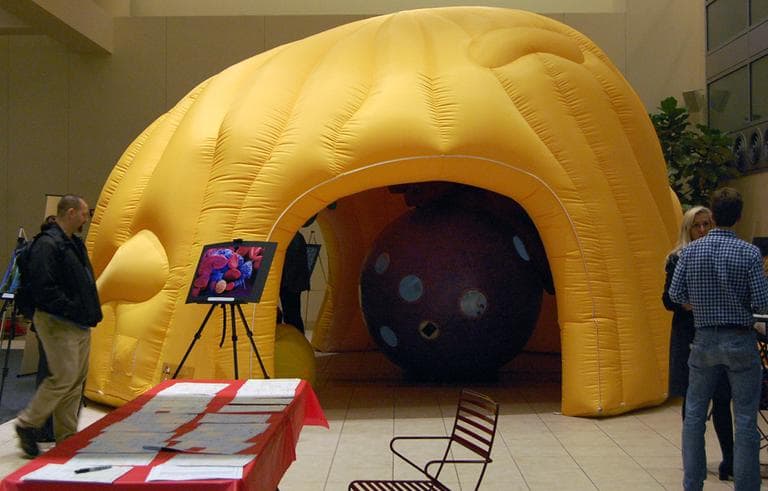
Biology is much more fun in 3D — especially if you can touch, squeeze, recline on, peek into and walk through it.
On Tuesday night I got to experience The Giant Cell, an inflatable, interactive exhibit part of the Cambridge Science Festival. It's a joint project of the University of Basel and Interpharma (a trade association for Swiss pharmaceutical companies).
And yes, The Giant Cell is giant — it's 300,000 times larger than a cell in your body. But all the parts were there: the nucleus, the ribosomes, the mitochondria, you name it. This was science education at its best. And biggest.
I asked Nate Goldman, WBUR's social media producer, to be my date for the nerdy evening. We walked into the echoing, sunlit atrium of Cambridge's 100 Technology Square.

"Were you good at biology in school?" I asked Nate:
"I did all right. I impressed the teacher a couple of times," he said. But nowadays Nate finds himself in a non-science field. So, like many of us, cell biology is lodged somewhere deep down in one of the corners of his memory. The Giant Cell to the rescue.
Meeting The Maker
Before we could explore the cell itself, its creator, Janine Hermann, greeted us warmly. Hermann's background in science dates back to childhood — she grew up in the lab with her chemist-father. She went on to study chemistry herself and became a chemistry teacher. Now, Hermann is the Head of Education at Interpharma, charged with task of enhancing science teaching in Switzerland.
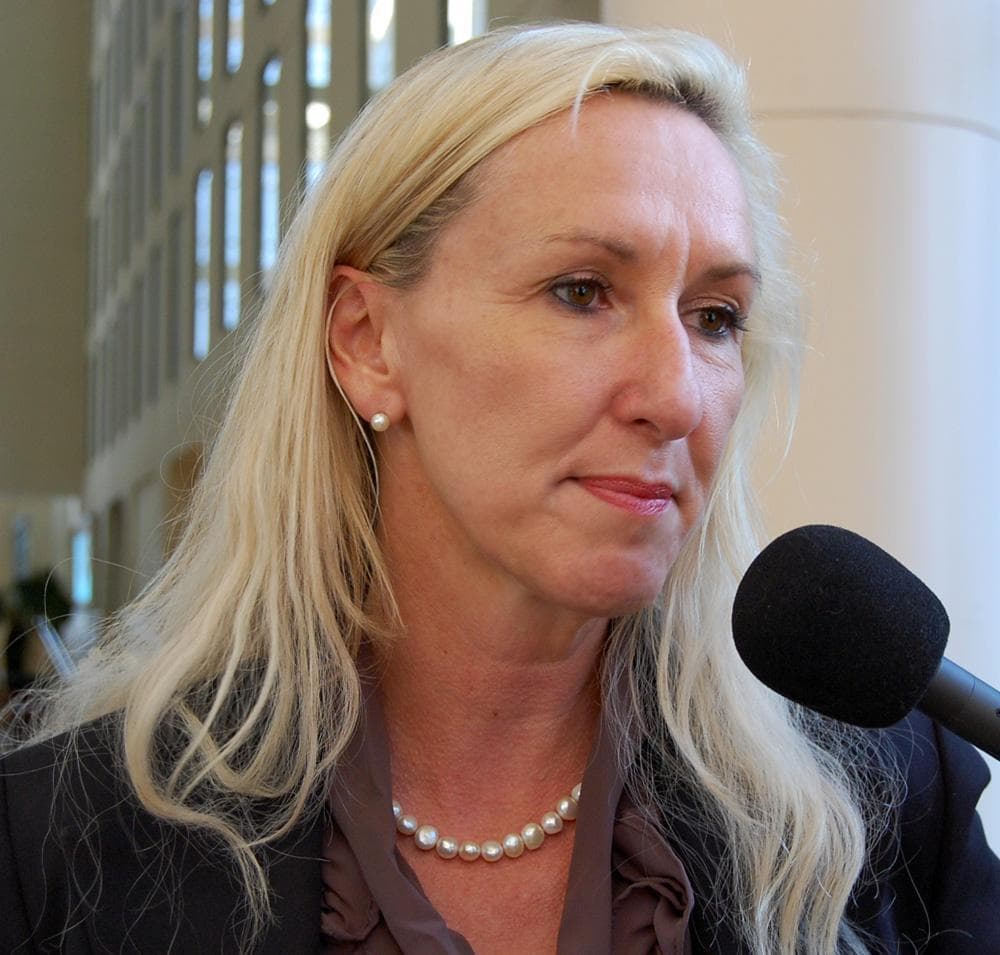
She and The Giant Cell, along with a team from the University of Basel, have traveled all over Europe, visiting schools and symposiums. The Cambridge Science Festival marked not only their American debut, but their overseas debut.
Even with chemistry in her veins, Hermann's inspiration for the cell came from an unlikely source:
"As I'm a tennis player, I always play in a hall that's like a balloon. I went up to my boss and said I want to create a cell so that everybody can walk in," she said.
And that's exactly what she did. The Giant Cell came to life two years ago to help celebrate the University of Basel's 550th anniversary. Christopher Monnier, part of the university team traveling with Hermann, explained:
Monnier, a master's candidate studying biophysics and nanobiology at the University of Basel, has been with the project since its start.
"I got stuck with it and didn't really escape from it yet," he joked.
The Magic And Creativity Of Science
Sometimes science isn't for everyone. But The Giant Cell aims to dislodge that idea and instead inspire curiosity and fun.

When you walk into it, you can't help but reach out and caress the big purple nucleus, peer into its porthole-like windows to catch a glimpse of the cottony chromosomes. Nine-year-old Justin Biemann was especially fond of this part of the cell:
Atop the nucleus you'll find the deep red endoplasmic reticulum coiling upward, studded with little black ribosomes encasing bits of knowledge for you to read as you resist squeezing the reticulum.
And if you keep looking up, you'll find the vesicles, which Justin's six-year-old brother Brennan aptly named "thingymabobbers":
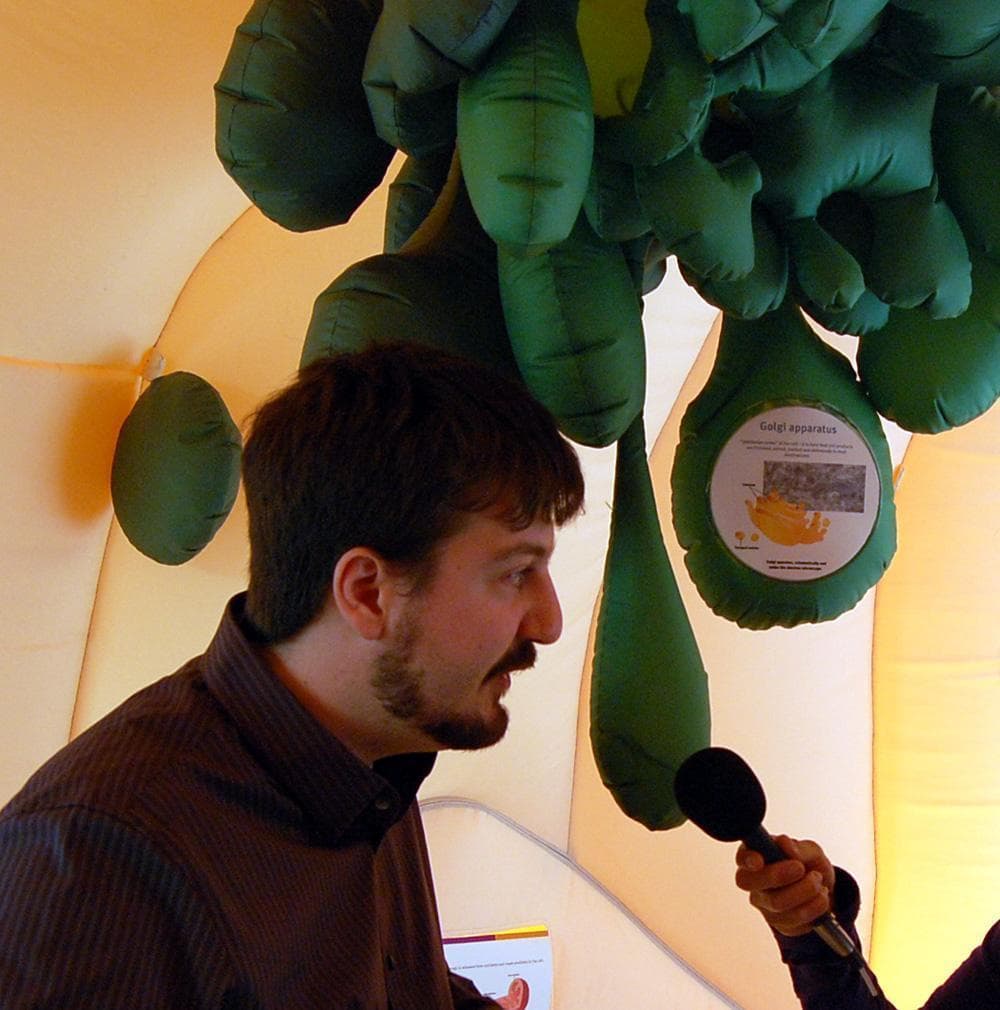
Turn around and — bam! — you'll find the vibrant green Golgi apparatus. It usually has an iPod in it, so you can hold your ear up to one of the hanging bulges to hear about how the Golgi apparatus works. Because the audio hadn't been translated into English, it remained silent during this first American visit. Next time.
But I haven't even gotten to the best part yet: the mitochondria chairs. These "powerhouses" of the cell are now available for your reclining pleasure.
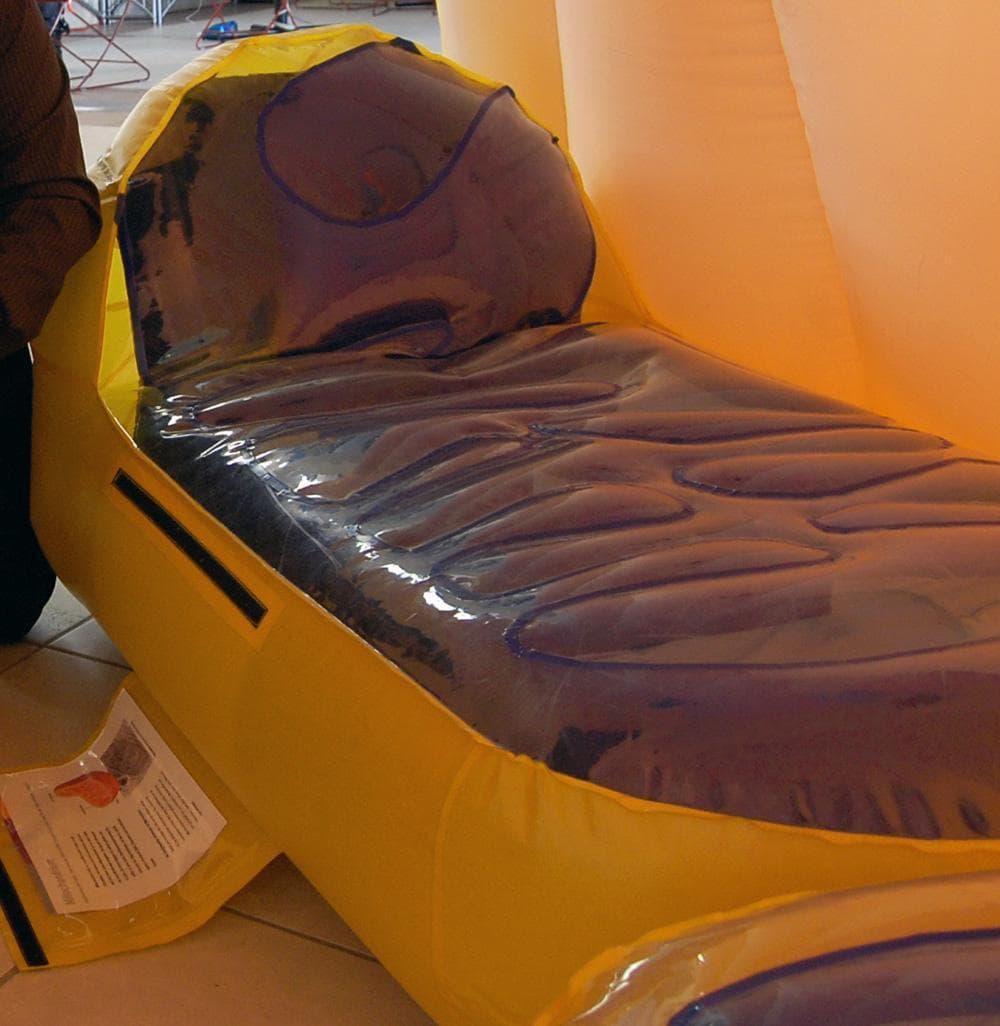
Monnier explained how the mitochondria chairs are popular with the kids. But he also talked about how the fascination with The Giant Cell spanned all ages, with entertaining reactions from each age group, from eager children to hesitant adults:
It's no surprise — everywhere you look, there's something for you to cock your head at and ask, "Ohhh, what's that?"
Hermann emphasized that interactivity was an essential part of the cell's design. She explained how Swiss kids nowadays are "very quickly fed up with information, so we have to encourage them to explore it themselves, and then they stay much longer in the cell."
Amy Dasch, CEO of Abazyme, a life sciences start-up, beamed as she explored The Giant Cell, grateful that it captured the reality of the macro (rather than molecular) world:
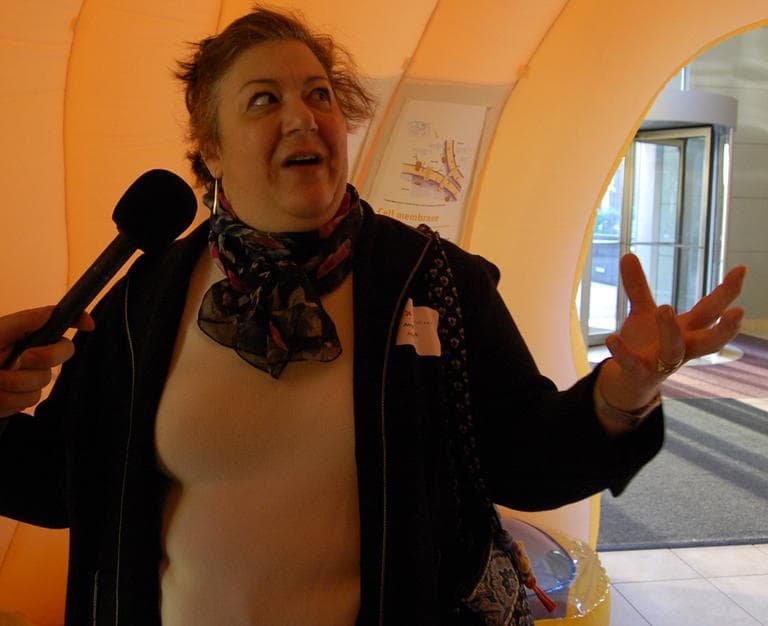
"This is really fun and exciting to see the three-dimensional embodiment of the cell. I think, as the world has gone to a molecular level in terms of understanding science, we forget how magical an actual living cell is — that it's not just the DNA and the genes, but it's actually a functional, living unit."
Not only can the cell embody something magical, it can also be a source of creativity, even for those outside of science.
I came across Matthew Micari while he was taking photos for his high school biology teacher. Micari is a "geloloist" and founder of Gelology Specialty Creations, where he makes custom gelatin creations. He reflected on how science has a lot farther reach than we may think:
"For me, it's about that fun of creativity. Maybe not everyone wants to be a researcher or doctor, but they're inspired by science — their designs, their art, their architecture can be all the way from the nano and from the cellular. For everyone else who's affected by science, you can use those elements in your structures and your design and creativity."
Giant Cell, Giant Potential
Where's The Giant Cell headed to next? Hermann said she's planning to go to San Francisco and Montreal with it. But she's getting emails from all over — as far as India and Dubai.
There's something about it that's far richer than a didactic museum exhibit. And it's more than just a big inflatable playground. It's substantive — there's something to excite you, intrigue you, teach you. There's no pressure of having to know it all. You can simply explore — exactly what Hermann wants you to do. It's carefree, inquisitive learning.
"It's like being a little kid again in that pit with all the colorful balls, but you're an adult and you're inside a giant cell," Micari said with a smile.
As far as the potential impact of the project? Dasch was certainly optimistic. "I think there should be one in every school," she concluded. "Anytime you can take a kid from the theoretical to the real is a positive thing."
Further Reading/Listening:
- Talk of the Nation (2011): Rethinking How Kids Learn Science
- Radiolab (2008): Making the Hippo Dance (making science understandable)
- Morning Edition (2001): What Does DNA Sound Like?